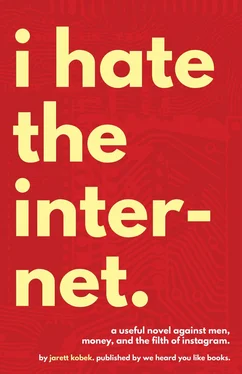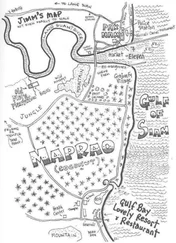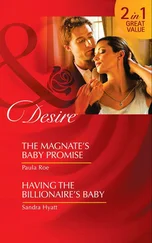As she was well read in the Frankfurt School, Zhang Xi had encountered the early works of Augustus Erhard Ernest Pfeiffer-Phol. Like all members of the Frankfurt School, Augustus Erhard Ernest Pfeiffer-Phol didn’t have any eumelanin in the basale stratum of his epidermis.
Zhang Xi admired Pfeiffer-Phol’s much ignored paper on Kant’s Critique of Pure Reason , in which the writer repeated a phrase to dismiss much of what he found lamentable in the Prussian thinker. This phrase was Wenn alle Nerven kaputt sind!
When Zhang Xi was writing her paper on Twitter, she had given a great deal of thought to the relationship between her writing and Pfeiffer-Phol’s work. The fundamental thesis of her paper was based on Pfeiffer-Phol’s idea that the most powerful person in any social situation is the one who speaks the least.
As a tribute to the Pfeiffer-Phol, Zhang Xi had turned his phrase into an acronym which had unfortunate connotations in English. It appeared as such:

The lower a Twitter user scored on the WaNks Index, the greater the influence. Users with very high scores had very little influence.
On the day of March 8, 2013, Lady Gaga’s WaNks Index Score was 0.0000765202785228534. She was very influential.
When Mother Monster went to see Marina Abramović at the Museum of Modern Art, her media presence may have been at its very peak.
It was between The Fame and Born This Way.
Marina Abramović became very famous. She never looked back.
Marina Abramović’s fame became a problem when people started to imagine a linguistic closeness between Marina Abramović and the pseudonym of M. Abrahamovic Petrovitch.
Adeline even looked a little like Marina Abramović. They were both women over forty with long dyed black hair and a lack of eumelanin in their epidermises.
Marina Abramović was older than Adeline by about twenty years, but this didn’t matter. People remember at most three characteristics about other people’s appearances. Usually, it’s two: the color of skin and the style of hair.
Whenever someone like Kevin Killian introduced Adeline as M. Abrahamovic Petrovitch, it was almost inevitable that she would be mistaken for Marina Abramović.
These conversations went something like this:
“This is Adeline. You might know her better as M. Abrahamovic Petrovitch. The artist.”
“OH MY GOD, YOU’RE MARINA ABROMOVIĆ? I TOTALLY WATCHED YOUR THING ON THE INTERNET.”
“No, darling, I’m not Abramović. I’m M. Abrahamovic Petrovitch. I’m not a performance artist. I draw comic books.”
“Oh. Like Spider-Man?”
“No.”
For three years, this was the most annoying aspect of Adeline’s modest dose of fame. She didn’t find it that bad, really, as she was being mistaken for someone else and could easily shut down conversations.
The day before someone found Adeline’s old interview in Wizard magazine, she went to brunch with Erik Willems at a bakery near Dolores Park called Tartine.
Tartine was a twee little place. Adeline tolerated it. Erik Willems loved it. Tartine was a tourist destination. There were usually long lines on weekends.
Adeline and Erik Willems had experienced a very rare occurrence. They were able to find a table.
Tartine’s renown was due to the high quality of its baked goods and the fact that it kept getting write-ups in a wide range of publications like Vogue and the New York Times.
The New York Times was transitioning from America’s newspaper of record into a website that catered to the perceived whims of affluent, youthful demographics.
This meant a lot of articles about ephemeral music. This meant a lot of articles about ephemeral technology. This meant a lot of articles about Tartine.
The New York Times was not very good at reporting on ephemeral music. It was even worse at reporting on ephemeral technology.
It was excellent at reporting about Tartine.
The New York Times was extraordinarily bad at reporting on the run-up to George Bush II’s War in Iraq.
After America was terrofucked , the New York Times had run all manner of ridiculous articles about how Saddam Hussein, the dictator of Iraq, was building and stockpiling Weapons of Mass Destruction.
The leaders of countries like America, who ran countries which possessed weapons capable of killing billions of people, disapproved of Weapons of Mass Destruction.
Whereas a conventional bomb, like the ones that America dropped on Iraq, would turn a family of illiterate peasants into red mist and chunks of meat and then incinerate the chunks of meat, Weapons of Mass Destruction would poison entire families of illiterate peasants and cause them to choke to death. Weapons of Mass Destruction would cause entire families of illiterate peasants to blister and suffer chemical burns until they died.
The moral being: when obliterating illiterate peasants, there’s a right way of doing things.
Both George Bush II and the New York Times said that Saddam Hussein had a metric fuckload of Weapons of Mass Destruction.
This was the principle justification for the War in Iraq.
George Bush II’s War in Iraq should not be mistaken for George Bush I’s War Against Iraq, which was justified by Saddam Hussein’s invasion of the oil rich country Kuwait.
Like his son, George Bush I had worked in oil. He knew the value of gas.
America was a country where a father and son, both with the same name, had waged war against the same dictator.
This is why more than half of the country forgot about their culturally imbued racism and decided it was time to elect an African-American to the Presidency.
When American troops under the command of George Bush II reached Iraqi soil, they discovered that there were no Weapons of Mass Destruction.
The administration of George Bush II was wrong.
The New York Times was wrong.
They had cocked-upped the story about Weapons of Mass Destruction. They had really fucked up.
Most of the worst reporting on Weapons of Mass Destruction was done by a woman named Judith Miller. Judith Miller relied on bogus sources like the Iraqi exile Ahmed Chalabi, who had some eumelanin in the basale stratum of his epidermis.
Another reporter named Michael Gordon helped Judith Miller in her bad reporting.
While Judith Miller was writing her intolerable bullshit, there was another reporter working for the New York Times named Jayson Blair. He was African-American. His basale stratum was loaded with eumelanin.
Both Judith Miller and Michael Gordon had a conspicuous lack of eumelanin in their epidermises.
Jayson Blair filed stories about domestic issues.
Like Judith Miller’s articles, the articles written by Jayson Blair were also intolerable bullshit.
Unlike Judith Miller, who asked Ahmed Chalabi to supply her with nonsense, Jayson Blair just made up his own crap.
He faked sources. He faked quotes. He faked being on location.
Eventually all of the bad reporting was exposed.
In the case of Blair, who wrote stupid little articles that were forgotten the day after publication, the New York Times printed an enormously long front-page article.
The article called the situation “a profound betrayal of trust” and a “low point in the 152-year history of the newspaper.” The article contained a long digression as to whether or not Jayson Blair had been promoted due to his plethora of eumelanin.
In the case of Judith Miller and Michael Gordon, whose articles were cited by George Bush II as evidence in the run-up to America’s invasion of Iraq and were thus responsible for 36,710 American casualties and hundreds of thousands of dead Iraqis, the New York Times published a short editorial that said its coverage of Weapons of Mass Destruction was not “as rigorous as it should have been.”
Читать дальше













